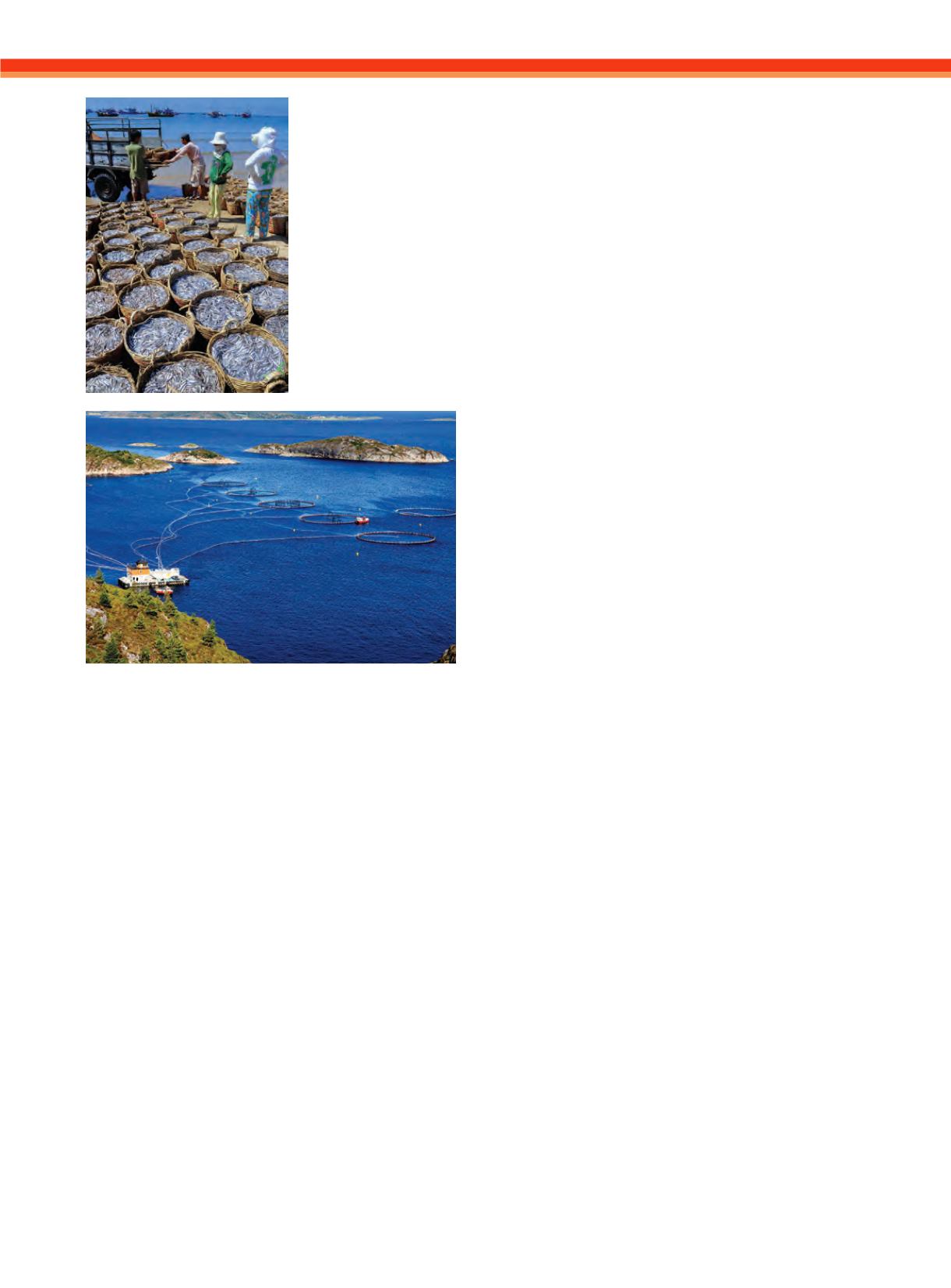
 ALERTDIVER.COM
ALERTDIVER.COM
|
83
historical tropes — some that were not very accurate
and some that were accurate in many cases but not
across the board."
Seafood Watch, which is known for compiling the
latest science on farmed and wild fish and informing the
public with its trusted consumer guides,
1
has begun to
include more farmed fish in its green “best choices” and
yellow “good alternatives” listings. Bigelow says that trend
is likely to continue — mainly out of necessity.
“If we were to have all of our wild fisheries managed
at ‘best choice’ level, we still wouldn’t have enough
fish to feed us all,” Bigelow said. “There is no future
without aquaculture. So when you look at it through
that lens, it behooves us to find the most sustainable
way to farm our fish.”
Fish farms now provide more than half of the seafood
eaten globally, and that number is rising quickly to
accommodate a growing population. It makes sense then
that, like most relatively new industries, aquaculture has
had to do a lot of growing up recently — and fast.
CHANGES IN THE AQUACULTURE INDUSTRY
For years, the biggest challenge associated with
aquaculture was the fact that farmed fish often
required sizable quantities of wild seafood to grow to
market weight. Known as the feed-conversion ratio
or “fish-in/fish-out” ratio, the quantity of wild fish
required to feed popular carnivorous species such as
salmon, tuna and shrimp was generally much higher
than the quantity of fish harvested. In the case of
salmon, it often took as much as three pounds of wild
fish to produce one pound of salmon.
Now the bulk of the industry is working to replace a
portion of that feed with high-protein plant materials
(soy meal, brewers grains, etc.), farmed insects and fish
oil. There is also a shift toward farming herbivorous
species such as tilapia, mussels and clams.
Bigelow also mentioned the trend of aquaculture
companies to move toward contained, on-land systems
and systems located in areas where escaped fish can’t
compete with their wild counterparts. Indoor fish
farms that use recirculating systems — wherein the
water is filtered and reused — are especially likely to
be sustainable. “You can drop almost any species in a
recirculating aquaculture system (RAS), and it’s going to
get a Seafood Watch green recommendation,” he said.
When companies build fish farms in the ocean,
Bigelow said, “many have stopped saying, ‘there’s wild
salmon here, so let’s just build a farm here.’” For this
reason and others, the likelihood that the fish will carry
disease or wreak biological havoc if and when they
escape into the wild is decreasing.
Taylor Voorhees, Seafood Watch senior aquaculture
scientist, agrees. He said he has seen fish farmers make
much more careful decisions about where to build
their farms in recent years.
“We’ve realized that deeper water with more tidal
flushing is typically better," Voorhees said. "And sites
that have hard bottoms are typically better than those
that have softer, muddy bottoms. All of those things are
more likely to be able to disperse the waste that comes
out of the pens and therefore have less of an impact.”
THE ARGUMENT FOR WILD
Not everyone sees aquaculture as the future of seafood.
Geoff Shester, the California program director at Oceana,
a global nonprofit aimed at protecting and restoring the
world’s oceans, would rather see more consumers opt for
wild seafood that’s low on the food chain.
Shester echoes the sentiments of Oceana’s chief
executive officer, Andy Sharpless, whose book
The
Perfect Protein
proposes a radical shift in the way
American consumers view seafood. Both Sharpless and
Shester invite seafood eaters to take an especially close
look at what’s happening to forage fish — species such
Purchasing responsibly
harvested or cultivated
seafood is not
straightforward, so
organizations such as
the Marine Stewardship
Council, Monterey Bay
Aquarium Seafood
Watch and Oceana
are working to inform
consumers and increase
transparency in the
seafood industry.
ISTOCKPHOTO.COM
ISTOCKPHOTO.COM
















